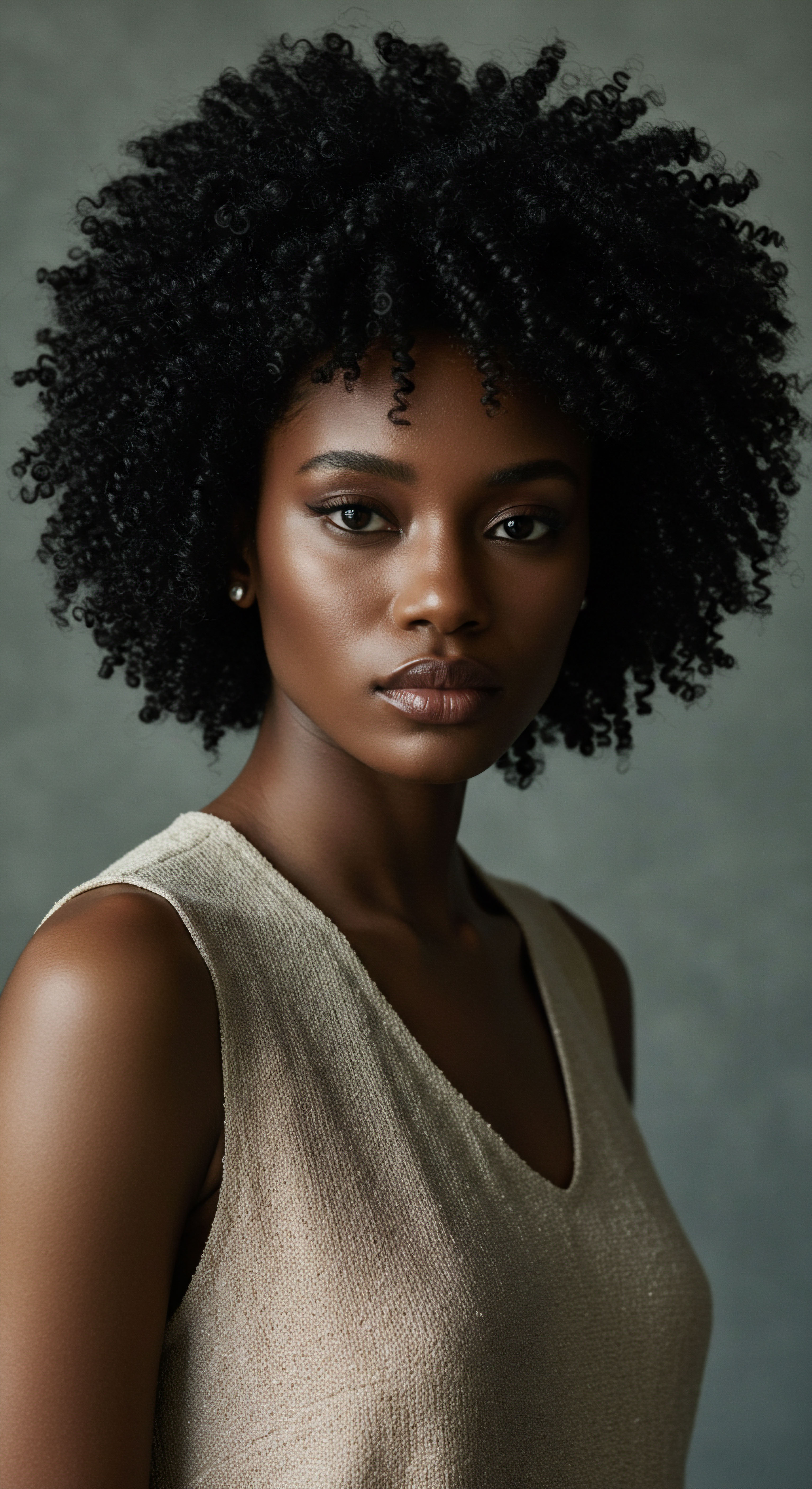
Roots
Consider for a moment the quiet hours of the night, when the world softens its edges and a profound stillness descends. For countless individuals across generations and continents, this period holds a special significance for hair. It is not merely a time for rest; it often transforms into a sacred space where cultural wisdom, ancestral care, and scientific understanding intertwine, particularly for those with textured hair.
This deep connection to nighttime rituals, passed down through whispers and practice, speaks to a history far older than any modern product. It is a testament to the enduring human desire to honor, protect, and celebrate what grows from us, recognizing its deep ties to identity and well-being.

Hair Anatomy and Physiology
To truly appreciate why nighttime care holds such a revered position for textured hair, one must first understand its fundamental design. Unlike straight or wavy hair, which often grows from a round or oval follicle, textured hair emerges from a follicle with a distinct elliptical or flattened shape. This unique follicular structure causes the hair strand itself to grow in a spiral or helical pattern.
The tighter the curl, the more pronounced this helical shape becomes. This structural characteristic, while visually striking, introduces specific challenges and needs for the hair fiber.
The very architecture of a highly coiled strand means that the natural oils, produced by the scalp’s sebaceous glands, face a more circuitous path down the hair shaft. This can result in a natural inclination towards dryness, as the protective lipid coating does not easily distribute from root to tip. Furthermore, the numerous bends and twists in each strand create inherent points of vulnerability.
These points are susceptible to friction and mechanical stress, leading to a higher propensity for breakage compared to less coiled hair types. The cuticle, the outermost protective layer of the hair, can lift more readily at these curves, leaving the inner cortex exposed to environmental stressors and moisture loss.
Afro-Textured Hair, for instance, has been observed to possess a lower radial swelling rate than Asian and Caucasian hair, even with a higher lipid content, underscoring its unique moisture dynamics. This paradox highlights a need for targeted care strategies that prioritize hydration and protection, especially during periods of rest when hair is most vulnerable to environmental factors like dry air or abrasive surfaces.
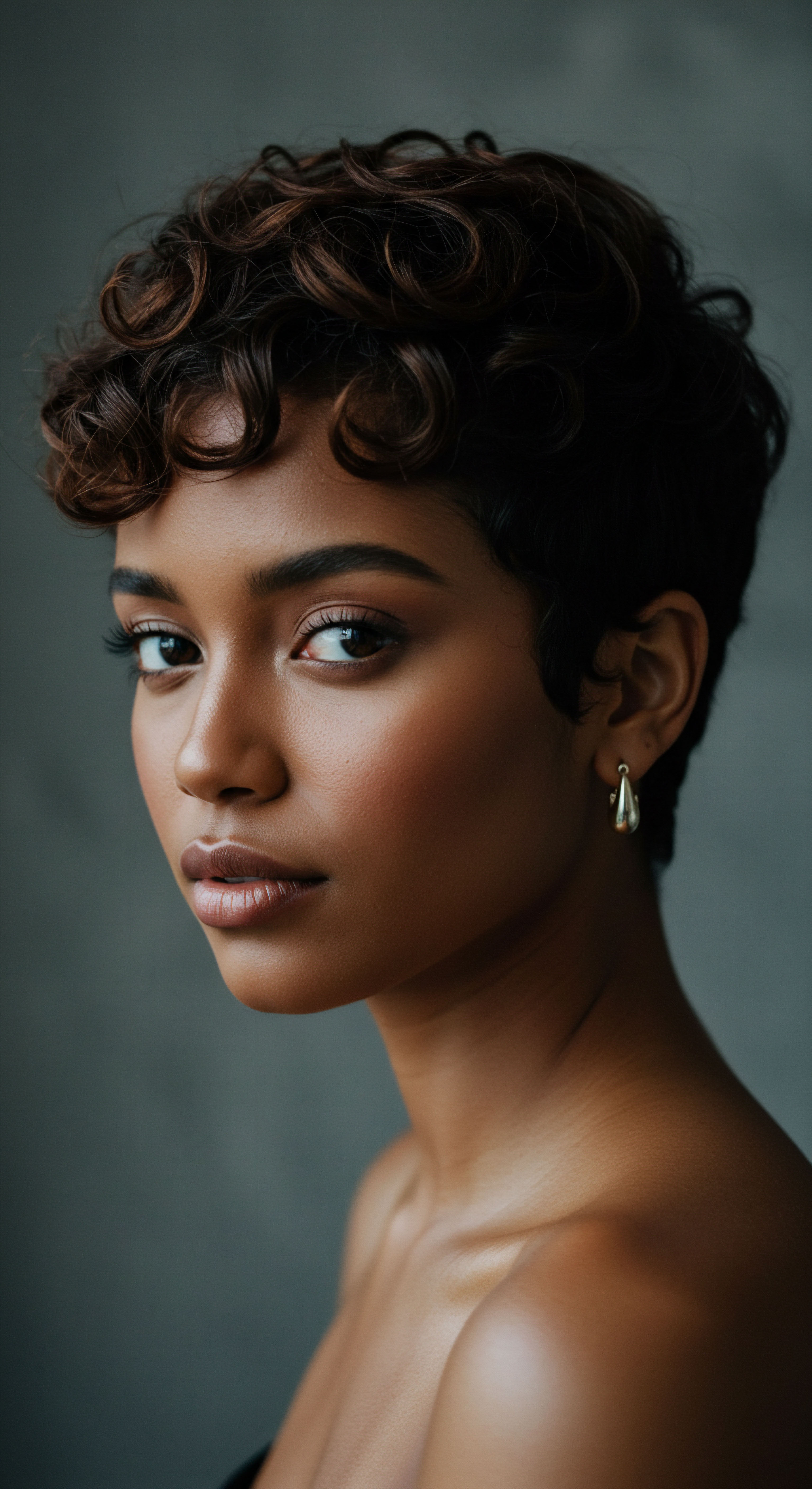
Textured Hair Classification Systems
The world of textured hair is wonderfully diverse, a spectrum of coils, curls, and waves. Over time, various classification systems have emerged to help categorize and understand this rich variety, though none fully capture the individuality of each person’s strands. The most widely recognized system, popularized by stylist Andre Walker, assigns numbers and letters (e.g. 3A, 4C) to describe curl patterns.
- Type 1 ❉ Straight hair.
- Type 2 ❉ Wavy hair, ranging from loose waves (2A) to defined S-shapes (2C).
- Type 3 ❉ Curly hair, with distinct loops and spirals, from loose curls (3A) to tight, springy coils (3C).
- Type 4 ❉ Coily or kinky hair, characterized by tight, Z-shaped or S-shaped coils, from fine (4A) to dense (4C).
While these classifications offer a common language for discussion, they represent a starting point, not a definitive box. The true care journey acknowledges that within each type, individual hair can vary in porosity, density, and strand thickness, all of which influence how it responds to products and practices, particularly those applied before sleep. Understanding these distinctions allows for a more attuned approach to nightly routines, moving beyond a one-size-fits-all mentality.

The Essential Lexicon of Textured Hair
Navigating the world of textured hair care requires a shared vocabulary, a set of terms that allow for precise communication about its unique needs and properties. These words are not merely jargon; they are keys to unlocking a deeper understanding of hair health.
Porosity refers to the hair’s ability to absorb and retain moisture. Low porosity hair has a tightly closed cuticle, making it resistant to moisture entry but also resistant to moisture loss once absorbed. High porosity hair, with a more open cuticle, readily absorbs moisture but also loses it quickly. Nighttime sealing practices are often tailored to these varying porosity levels.
Density describes the number of individual hair strands on the scalp. High density hair appears thick and full, while low density hair appears thinner. This impacts how much product is needed and how styles lay.
Elasticity speaks to the hair’s ability to stretch and return to its original shape without breaking. Healthy hair has good elasticity, a sign of adequate moisture and protein balance. Nighttime protection aims to preserve this vital characteristic.
Shrinkage is the apparent reduction in length of textured hair when it dries, due to its coil pattern. While a sign of healthy elasticity, it also means hair can tangle more easily, making careful nighttime preparation even more important.

Hair Growth Cycles and Influencing Factors
Hair growth is a continuous process, unfolding in distinct phases ❉ the anagen (growth) phase, the catagen (transitional) phase, the telogen (resting) phase, and sometimes an exogen (shedding) phase. For textured hair, factors beyond genetics, such as styling practices and environmental exposure, can significantly influence these cycles. Mechanical stress from daily manipulation or abrasive surfaces during sleep can contribute to premature breakage, shortening the effective growth period.
Cultural practices often play a protective role, seeking to minimize these external stressors. The use of specific oils, protective styles, and head coverings during sleep are not just aesthetic choices; they are often deeply practical measures designed to safeguard the hair’s integrity through its natural cycles, allowing it to reach its fullest potential length and health. This understanding forms the bedrock upon which nighttime rituals are built, acknowledging the hair’s biological journey and supporting it with care.

Ritual
Step into the realm of practical wisdom, where the deep understanding of hair’s nature translates into daily rhythms of care. For textured hair, nighttime rituals are not merely an afterthought; they represent a conscious act of preservation, a gentle conversation between hands and strands. These practices, honed over generations and informed by a deep appreciation for hair’s unique requirements, transform the evening hours into a sanctuary for strands. It is a time when the hair is given the rest and protection it needs to flourish, shielded from the friction and environmental elements that can compromise its delicate structure.

Protective Styling Encyclopedia
The cornerstone of nighttime care for textured hair often lies in protective styling. These styles are designed to minimize manipulation, reduce exposure to environmental stressors, and guard the hair’s ends, which are the oldest and most fragile parts of the strand. By tucking away the hair, these styles prevent tangling and friction against pillows or bedding, thereby reducing breakage.
Popular choices include:
- Braids ❉ Whether single braids, cornrows, or plaits, these styles keep hair neatly contained. They prevent individual strands from rubbing against each other or external surfaces.
- Twists ❉ Two-strand twists or flat twists serve a similar purpose to braids, offering a gentle way to coil sections of hair together.
- Buns and Pineapples ❉ A high, loose bun, often called a “pineapple,” gathers the hair at the top of the head. This technique keeps the majority of the hair off the neck and pillow, preserving curl definition and reducing flattening.
- Banding ❉ This method uses hair ties or soft scrunchies along the length of stretched hair to maintain its elongation and prevent shrinkage and tangling.
Each protective style offers a unique balance of protection and aesthetic appeal, chosen based on hair length, texture, and the desired outcome for the next day. The intention behind each style is to create a safe haven for the hair as one sleeps, allowing it to remain undisturbed and hydrated.

The Nighttime Sanctuary ❉ Essential Sleep Protection
Beyond styling, the materials that touch textured hair during sleep play a pivotal role in its well-being. The traditional cotton pillowcase, while comfortable for many, can act as an absorbent and abrasive surface for textured hair. Its fibers can draw moisture from the hair, leading to dryness, and create friction that causes frizz, tangles, and breakage. This understanding has led to the widespread adoption of specific sleep accessories.
A silk or satin bonnet or pillowcase provides a smooth, low-friction surface that helps retain hair’s moisture and prevents mechanical damage during sleep.
Bonnets and Scarves made of silk or satin have long been a cherished component of nighttime hair care for many cultural groups, particularly within the Black community. These smooth fabrics allow hair to glide freely, minimizing friction that causes breakage and preserving delicate curl patterns. A historical account notes that while bonnets and headwraps have roots in European fashion, they gained profound cultural significance and became a practical tool for Black women during and after enslavement, used to protect hair and even to communicate coded messages. This deep cultural connection reinforces their role as a vital tool for hair preservation.
Silk Pillowcases offer a similar benefit, providing a gentle surface for those who prefer not to cover their hair or as an added layer of protection. The smooth texture of silk helps to reduce frizz and maintain the hair’s natural moisture balance. The choice of material for sleep protection is a conscious decision to safeguard hair from the unseen stresses of the night, a practice that aligns both with scientific understanding of hair fiber fragility and cultural wisdom.

Ingredient Deep Dives for Textured Hair Needs
The products applied before bedtime are as significant as the protective measures themselves. Textured hair, with its propensity for dryness, benefits immensely from ingredients that provide lasting hydration and seal in moisture.
A common approach involves layering products, often referred to as the L.O.C. (Liquid, Oil, Cream) or L.C.O. (Liquid, Cream, Oil) method, depending on hair porosity and preference.
- Liquid ❉ This first step reintroduces water-based moisture to the hair. This might be a leave-in conditioner, a hydrating mist, or simply water itself.
- Oil ❉ A lightweight oil, such as jojoba, argan, or grapeseed, is then applied to seal the moisture onto the hair shaft. Oils create a barrier that slows down water evaporation.
- Cream ❉ A heavier cream or butter provides additional moisture and helps to further seal the cuticle, offering sustained hydration throughout the night.
Ingredients like shea butter, coconut oil, and castor oil, deeply rooted in traditional African and South Asian hair care practices, are now widely recognized for their moisturizing and protective properties. These natural emollients coat the hair, reducing friction and supporting its resilience against environmental dryness. The deliberate selection and layering of these ingredients reflect a mindful approach to hair health, ensuring that strands are nourished and protected during their nightly repose.
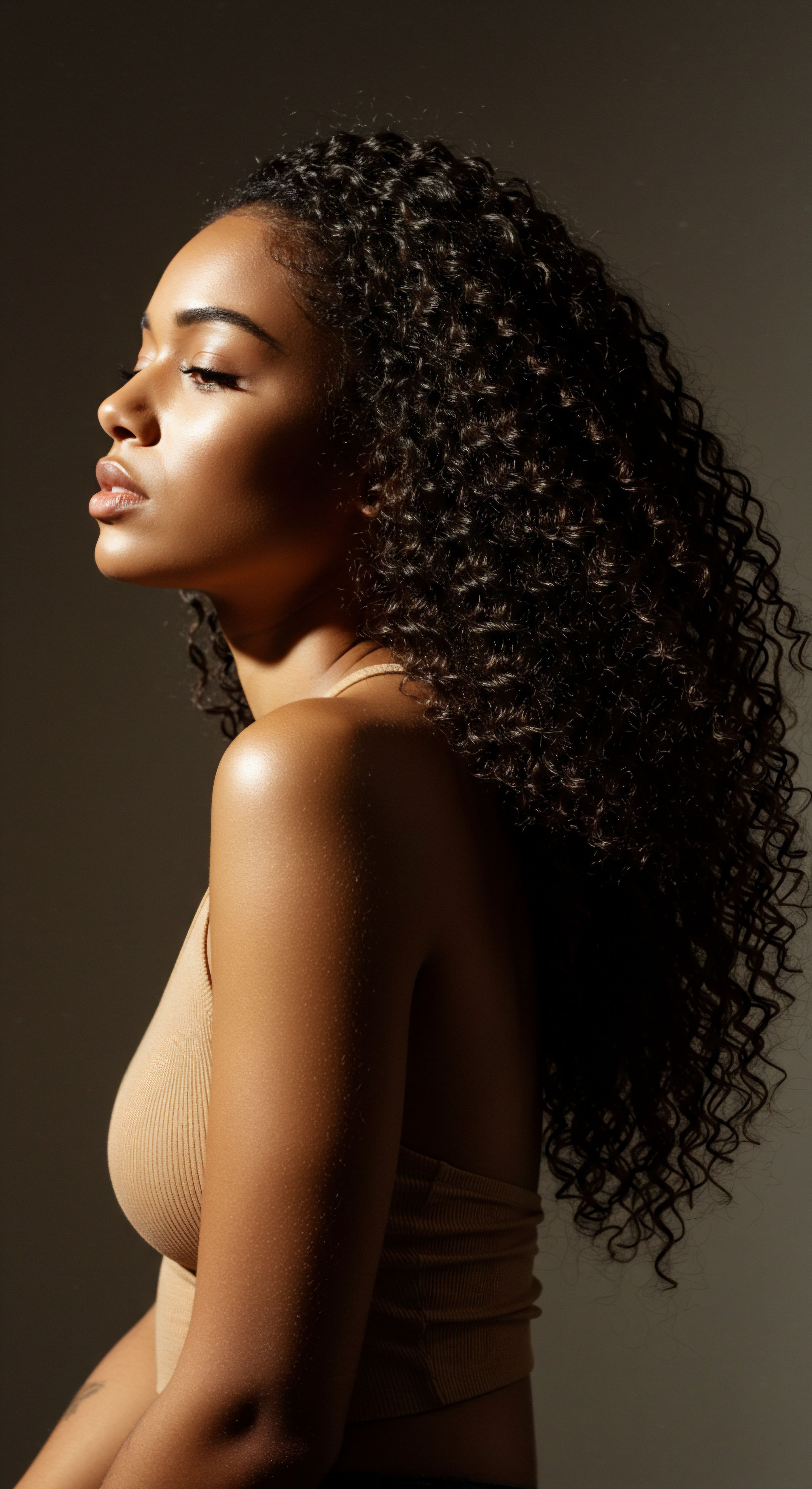
Textured Hair Problem Solving Compendium
Even with diligent care, textured hair can present specific challenges that nighttime routines can help address.
Dryness ❉ This is perhaps the most common concern. Nighttime applications of rich, hydrating creams and oils, combined with silk protection, are essential to combat moisture loss. Consistency in these practices helps to gradually improve the hair’s hydration levels.
Breakage and Split Ends ❉ The fragility of textured hair makes it prone to mechanical damage. Protective styles and smooth sleep surfaces drastically reduce the friction that leads to breakage. Regular trims, alongside these nightly habits, maintain healthy ends.
Tangles and Knots ❉ The coily nature of textured hair can lead to significant tangling. Detangling before styling for the night, using a wide-tooth comb or fingers, and securing hair in braids or twists prevents further knotting and makes morning styling much simpler.
Scalp Health ❉ A healthy scalp is the foundation of healthy hair. Some nighttime routines include gentle scalp massages with nourishing oils to stimulate blood circulation and address dryness or flakiness. For conditions like seborrheic dermatitis, certain medicated shampoos can be very drying for Afro-textured hair, underscoring the need for careful application directly to the scalp or alternative, gentler formulations to maintain moisture.
Addressing these concerns through consistent, tailored nighttime care transforms potential problems into opportunities for nurturing and strengthening the hair, allowing it to thrive.

Relay
Our exploration now moves to a deeper plane, where the threads of cultural heritage, scientific inquiry, and individual experience intertwine to illuminate the profound influence of cultural practices on nighttime hair care for textured hair. This is a space where the nuanced interplay of societal expectations, historical contexts, and biological realities reveals itself, painting a more complete picture of how deeply personal hair care truly is. It is here that we witness how traditions, far from being static relics, dynamically shape and are shaped by the lived realities of those who practice them.

The Societal Mirror and Hair Care Choices
Hair, for many, is a powerful symbol of identity, status, and belonging. For individuals with textured hair, particularly within the African diaspora, this symbolism is layered with complex histories of oppression, resistance, and self-definition. The dominant beauty standards in many societies have historically favored straight hair, creating immense pressure to conform. This pressure has, at times, led to hair care practices that, while aiming for social acceptance, could compromise hair health.
A poignant example of this societal influence comes from a study in Brazil, where Black Women often prioritize hair straightening, despite being aware of the associated risks, to align with workplace beauty standards. This phenomenon speaks to a broader, global challenge where the desire for professional or social integration can lead individuals to adopt practices that contradict the biological needs of their hair. Such choices, made under the weight of societal expectations, underscore the enduring impact of cultural norms on even the most intimate aspects of personal care, including nighttime routines designed to recover from the day’s styling. The struggle between cultural authenticity and external pressures becomes a quiet battle fought in the evening hours, with hair health often hanging in the balance.
Societal beauty standards have historically driven textured hair care choices, sometimes prioritizing conformity over hair health.

The Interplay of Tradition and Modern Science
Cultural practices in nighttime hair care are not merely anecdotal; many possess a scientific basis that modern trichology is beginning to affirm. The use of natural oils, for instance, has been a staple in African and South Asian hair care for centuries. Science now confirms that many of these oils, such as coconut and castor oil, contain fatty acids that can penetrate the hair shaft or coat it effectively, reducing protein loss and providing a protective barrier against moisture evaporation.
Similarly, the practice of covering hair at night with silk or satin scarves and bonnets, a widespread tradition, is scientifically sound. These materials minimize friction, which is a significant cause of cuticle damage and subsequent breakage in textured hair. The smooth surface helps preserve the hair’s natural moisture content, preventing the dryness that cotton fabrics can induce. This convergence of ancient wisdom and contemporary scientific understanding highlights the inherent logic behind many cultural hair care rituals, proving them to be far more than mere superstition.

Economic and Social Dimensions of Nighttime Care
The cultural practices surrounding nighttime hair care also carry significant economic and social dimensions. The market for products tailored to textured hair has expanded considerably, driven by the natural hair movement and a growing appreciation for diverse hair types. This shift has led to the availability of specialized conditioners, oils, and styling aids designed to support these nightly routines.
However, the economic landscape is not without its complexities. The demand for specific, often premium, products for textured hair can create financial barriers for some. Furthermore, the commercialization of traditional practices raises questions about authenticity and cultural appropriation, as products and methods once exclusive to certain communities become mainstream.
Socially, nighttime hair care rituals often serve as moments of bonding and knowledge transfer within families and communities. Generations share techniques, product recommendations, and stories, reinforcing cultural identity. The simple act of preparing hair for sleep can become a shared experience, strengthening ties and preserving heritage. This communal aspect adds another layer of meaning to practices that might, on the surface, appear purely functional.
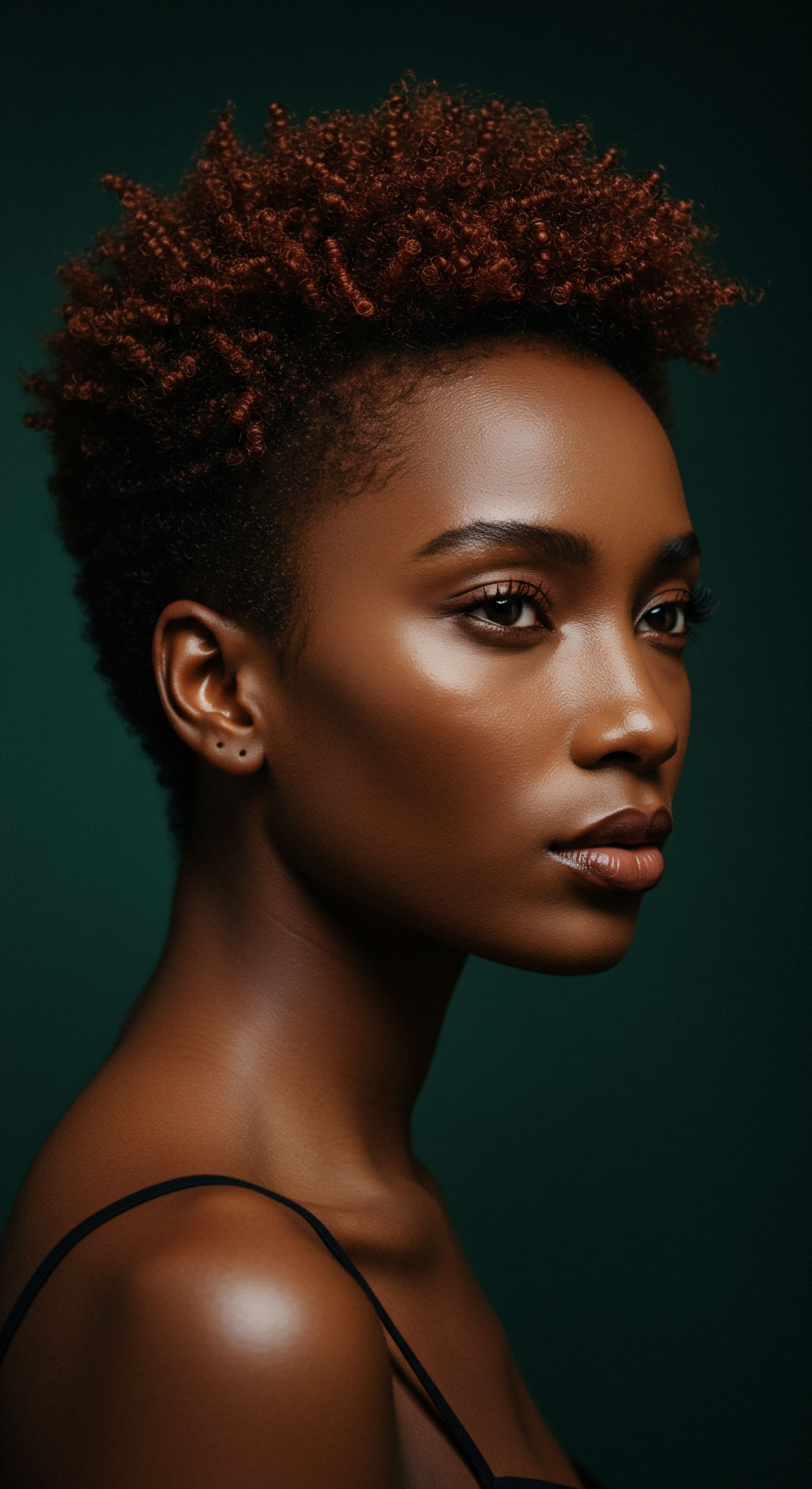
Hair Health and Psychological Well-Being
The influence of cultural practices on nighttime hair care extends beyond physical health, reaching deep into psychological well-being. For many with textured hair, the nightly ritual is a moment of self-care, a quiet affirmation of self-acceptance and pride in one’s natural appearance. The act of tending to one’s hair, preparing it for rest, can be a meditative experience, fostering a sense of calm and connection to one’s heritage.
Conversely, the pressure to conform to Eurocentric beauty standards can lead to psychological distress, even impacting how one approaches nighttime care. The internal conflict between protecting one’s natural hair and societal expectations can create a cycle of damage and repair. Embracing and celebrating natural texture, supported by culturally relevant care practices, can therefore become a powerful act of self-love and resilience, contributing significantly to mental and emotional health. The journey to accepting and cherishing one’s hair is often mirrored in the dedication to its nightly preservation.
The nightly care of textured hair is not merely physical; it is a profound act of self-affirmation, reinforcing cultural pride and psychological well-being.

Looking Beyond the Horizon ❉ Future Directions
As our understanding of textured hair deepens, informed by both traditional wisdom and scientific advancement, the future of nighttime hair care promises even greater personalization and efficacy. Research into the genomic variations influencing hair characteristics is opening doors to highly tailored product formulations that align precisely with individual hair needs. This could lead to a new generation of nighttime treatments that optimize moisture retention and minimize damage based on a person’s unique genetic profile.
Furthermore, a growing appreciation for ethnobotanical knowledge means that more traditional ingredients and practices are being studied for their efficacy, bridging the gap between ancient remedies and modern cosmetic science. The continued dialogue between cultural custodians and scientific researchers holds the promise of truly holistic hair care solutions, where nighttime rituals are not only effective but also deeply meaningful, honoring both the past and the possibilities of the future. This ongoing exchange will surely lead to new ways of understanding and caring for textured hair, making the quiet hours of the night even more beneficial for its health and vitality.

Reflection
As the moon ascends and the world prepares for slumber, the influence of cultural practices on nighttime hair care for textured hair stands as a testament to human ingenuity, resilience, and profound connection to heritage. These practices are not static relics of a bygone era; they are living, breathing expressions of identity, shaped by history, affirmed by science, and adapted by each new generation. From the ancient wisdom of protective styling to the modern embrace of silk bonnets, the nightly ritual transforms into a quiet act of preservation, a gentle reaffirmation of self. It speaks to a deep-seated knowing that true beauty flourishes when nurtured with understanding and respect, allowing each coil and curl to rest, renew, and rise with renewed vitality.
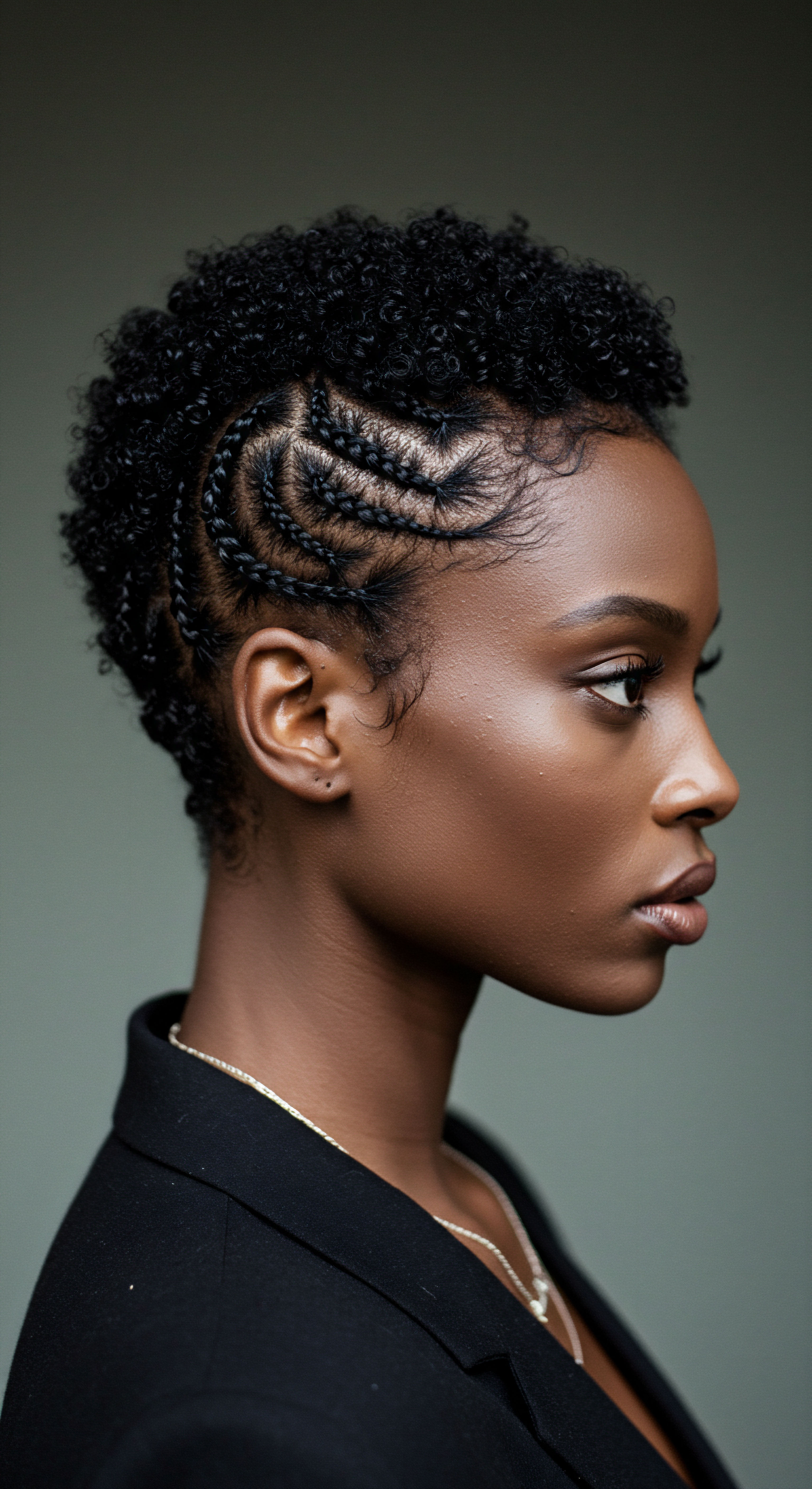
References
- Byrd, Ayana, and Lori L. Tharps. Hair Story ❉ Untangling the Roots of Black Hair in America. St. Martin’s Press, 2001.
- Dabiri, Emma. Twisted ❉ The Tangled History of Black Hair Culture. Harper Perennial, 2020.
- Davis-Sivasothy, Audrey. The Science of Black Hair ❉ A Comprehensive Guide to Textured Hair Care. Sivasothy, 2011.
- Ellington, Tameka. Textures ❉ The History and Art of Black Hair. Schiffer Publishing, 2020.
- Loussouarn, G. “African Hair Growth Parameters.” British Journal of Dermatology, vol. 145, no. 2, 2001, pp. 294–297.
- Mercer, Kobena. “Black Hair/Style Politics.” New Formations, vol. 3, 1987, pp. 33-52.
- Oladele, Deborah, Ewa Markiewicz, and Olusola C. Idowu. “The Genomic Variation in Textured Hair ❉ Implications in Developing a Holistic Hair Care Routine.” Preprints.org, 2024.
- Robbins, Clarence R. Chemical and Physical Behavior of Human Hair. Springer, 2012.
- Tarlo, Emma. Entanglement ❉ The Secret Lives of Hair. Oneworld Publications, 2022.
- Van Driel, Jacky. “Trichological Dangers of Being Black.” Root Cause Clinical, 2023.